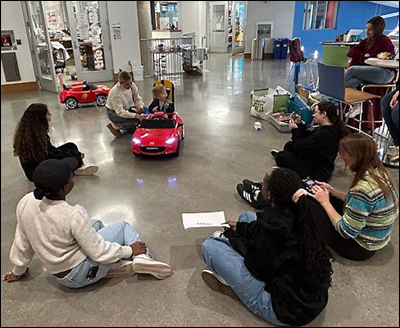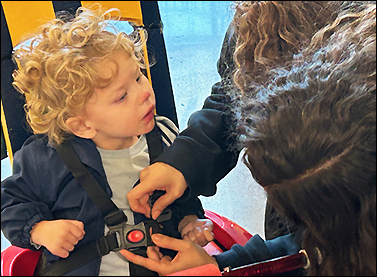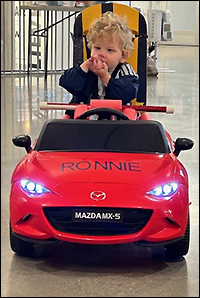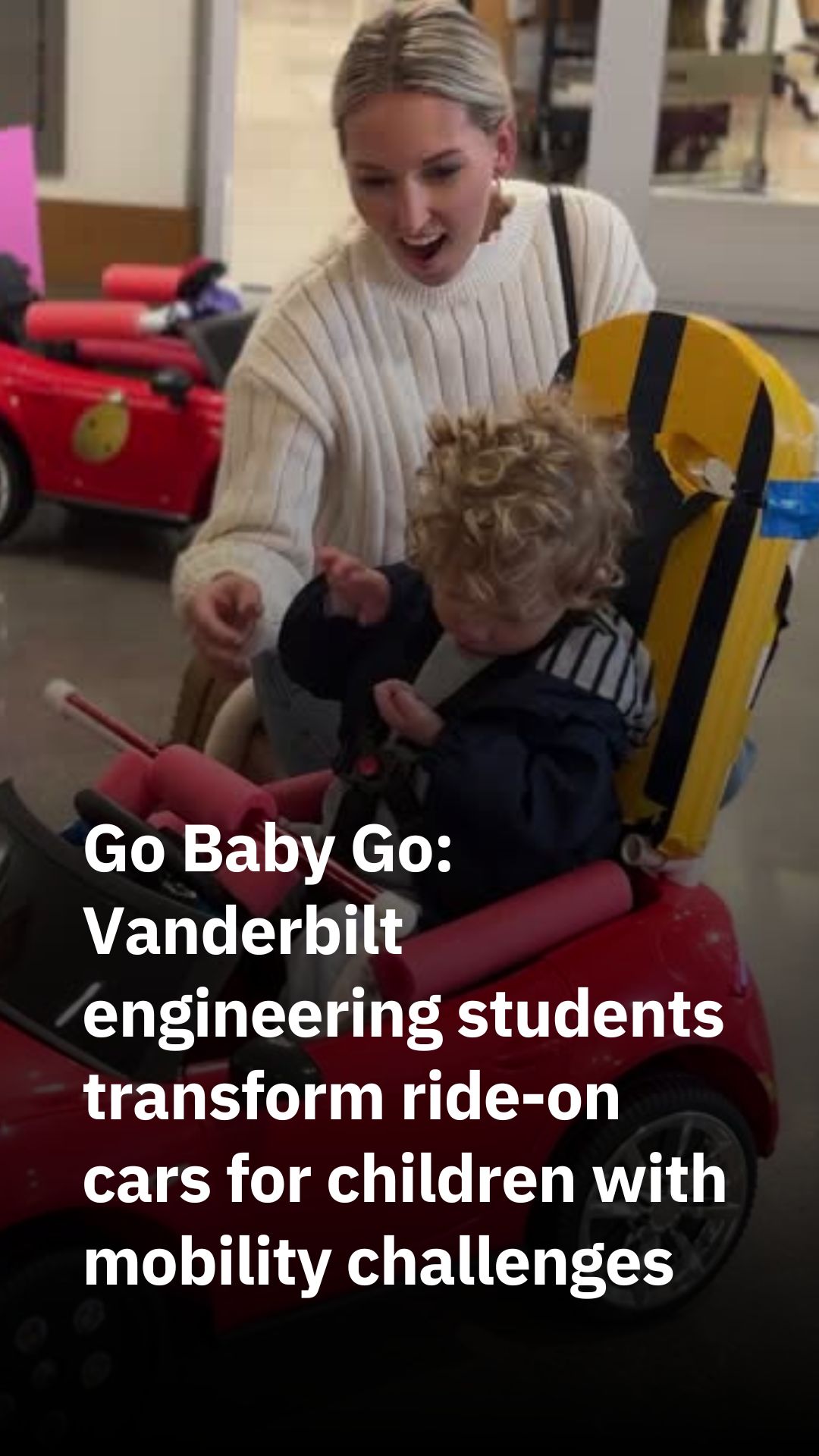Two-year-old Ronnie waves and drives a red toy car slowly forward with help from his mom. JoJo gets his car the day before his second birthday, while eight-year-old Olive shows off her new wheels to an adoring crowd of engineering and occupational therapy students.

These are not just any toy cars. They have been custom modified to allow children with poor muscle control, poor balance, or lower limb paralysis operate these 12-volt battery-powered beauties. See VIDEO below.
Hard, angular seats are gone, replaced by ones contoured to hold a toddler securely in place. Gas pedals are rewired to a button located on steering wheels. Parent-operated remote controls can determine left and right turns, forward and reverse. There’s also special padding to protect little knees. All retrofitting is done by Vanderbilt students in a biomedical engineering design class.
Off the shelf toy cars are not operable by children with poor muscle control. “Early childhood mobility is important for development milestones. We want to help these children gain mobility at the same time as their peers,” said Amanda Lowery, professor of the practice of biomedical engineering. “The students comment on how this project makes them feel like real engineers.”

Tiny drivers recently claimed their cars in the Wondry, Vanderbilt’s Center for Innovation. The engineering students were there for on-the-spot problem solving during the delivery and final fitting of the car with the child. “This has been so rewarding…to translate our research and see the impact,” said senior Seth Hemingway.
“Olive will be able to join our family walks in her car on our sidewalks,” her mother Amelia Platt said. The sidewalk will be packed. Olive has five siblings. Aaron, who will turn 2 in two weeks, was at a doctor’s appointment so his dad, Jason Eaves, picked up his car with a carryall cart attached. Aaron’s student team suggested the cart. “The cart is a great idea. Aaron has a lot of tools,” Eaves said.
“The openness of this project can be daunting, but the success of the children is worthwhile. The students comment on how this project makes them feel like real engineers,” said Amanda Lowery, professor of the practice of biomedical engineering.

Through the organization Go Baby Go Music City, Vanderbilt biomedical engineering students and Belmont University School of Occupational Therapy students work to modify cars for children with motor skills delays. Pediatric therapists at Vanderbilt University Medical Center recommend children and Belmont OT students provide the clinical assessment to identify each child’s needs. BME students work closely with OT students who are learning how to assess those needs but don’t necessarily have the skills to design, build and install devices to retrofit the cars.

Lowery and Eric Spivey, assistant professor of the practice of biomedical engineering, teach the required sophomore and junior biomedical design classes. For the students, the Go Baby Go car modifications provide very clear and strong motivation for the project, she said.
In addition to modifying the cars in the junior BME 3900W course, sophomores in BME 2900W modify battery-operated singing-dancing toys for the Tennessee Technology Access Center, which provides accessible toys across the state to children with disabilities.
Over the life of these courses, Lowery has instructed more 200 Vanderbilt engineering students, 30 high school students, and 150 people in the community modifying toys and cars. Lowery’s students have delivered 80 modified cars, 178 singing-dancing toys, and 19 student-authored story books.

“These design projects offer innumerable opportunities for complex problem solving, developing empathy, integration of skillsets across classes, and professional communication,” said Lowery. “The projects are important to me because of the service learning aspects and the immediate impact on the students, children and the families involved.”
Contact: brenda.ellis@vanderbilt.edu
